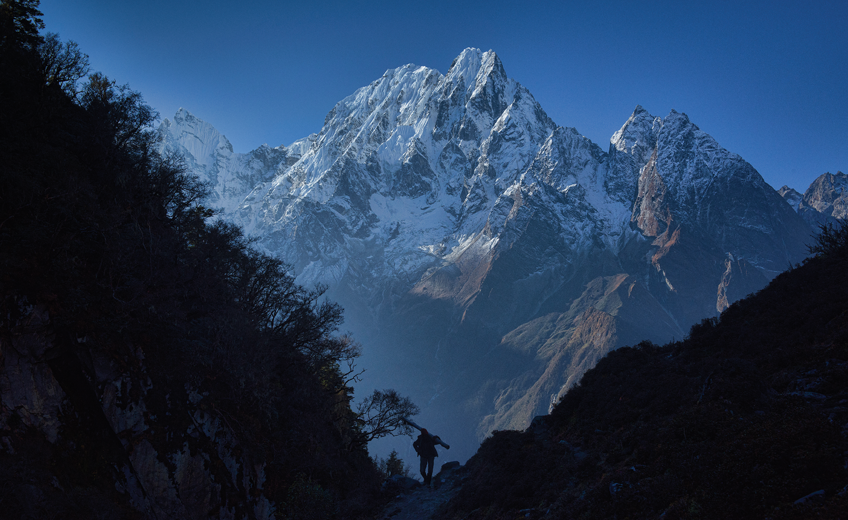Nepal’s Everest Base Camp trek gets the lion’s share of the country’s mountain visitors, with standing in the footsteps (or at least wistfully looking up at them) of Sir Edmund Hilary and Tenzing Norgay under the world’s most famous peak on every adventure traveller’s bucket list these days. Needless to say, the lines for a shower or morning outhouse visit can be as long as the queue of climbers the summit sees during climbing season. One great alternative to escape the hordes is the lesser known Manaslu Circuit, which does a circumnavigation of the world’s eighth highest peak, 8,153-metre Mount Manaslu, and explores an area of Nepal that until recently has been little traversed.
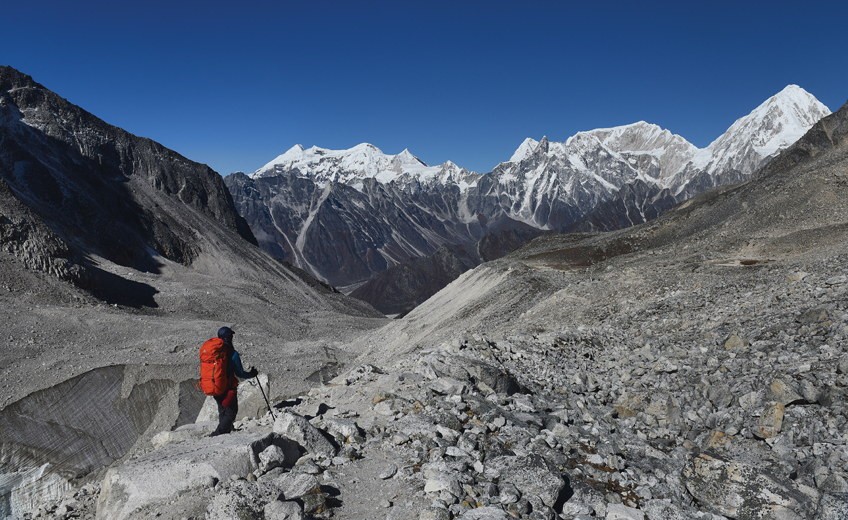
While trekking in the Manaslu region was opened to intrepid trekkers in 1991, the absence of any teahouse lodges meant that anyone attempting the 10-14 day circuit around the mountain had to carry all of their own supplies, tents, and essentially mount an expedition to make the journey. Only in the last few years have lodges opened up at the end of each walking stage, making it possible to hike the route with just a light pack, or even hire a porter to carry it for you.
The trail into Manaslu starts in the subtropical lowlands of the Gorkha region at 900 metres, and follows the Budhi Gandaki River, climbing up and down along narrow paths and through traditional Buddhist villages filled with colourful fields of millet, barley and amaranth, eventually climbing into the icy and frozen alpine world of the Larkya La Pass, which at 5,106 metres is the high point of the route. Many walkers also add on the newly opened Tsum Valley side trek to their hike, which follows the raging Tsum River up to the Chinese Tibetan border through a mountain wilderness rich in wildlife, with snow leopards, Himalayan tahr and large populations of bharal (Himalayan blue sheep).
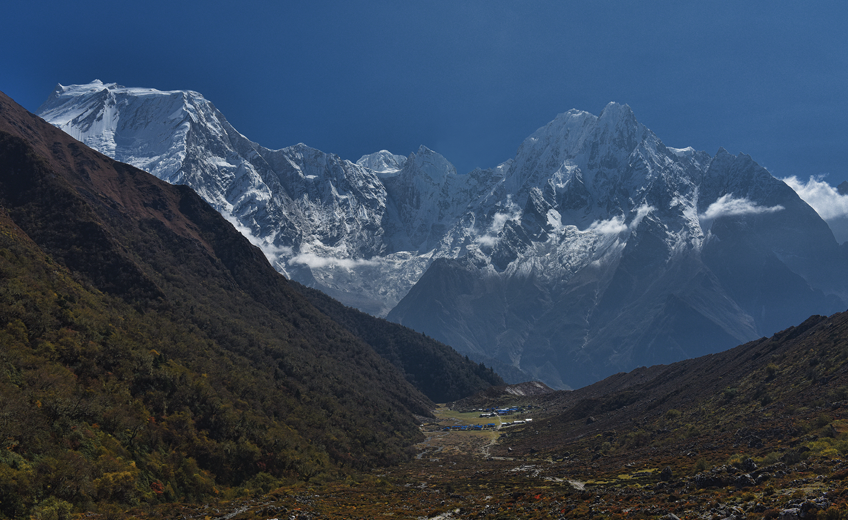
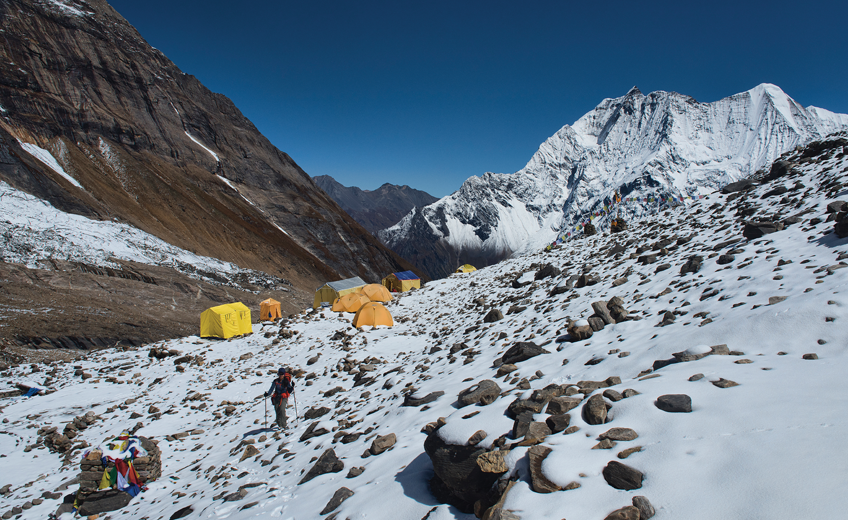
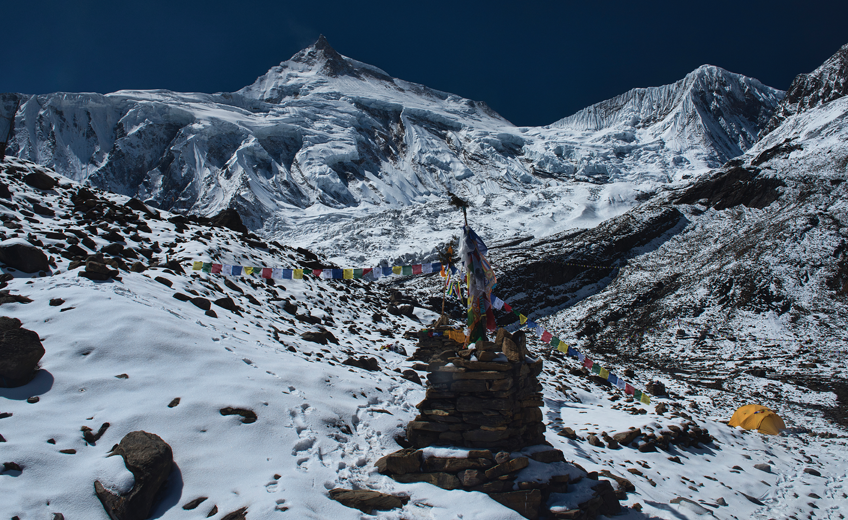
Our trekking party around Manaslu took it slow for the first week, abiding by the medical climbing rule of only sleeping 300 metres higher than one’s previous night’s camp, with a day off for further acclimatization after every three days and 1,000 metres ascended. By the time we reached Samagaon village up at 3,500 metres, while still short of breath we were headache-free and ready for further climbing.
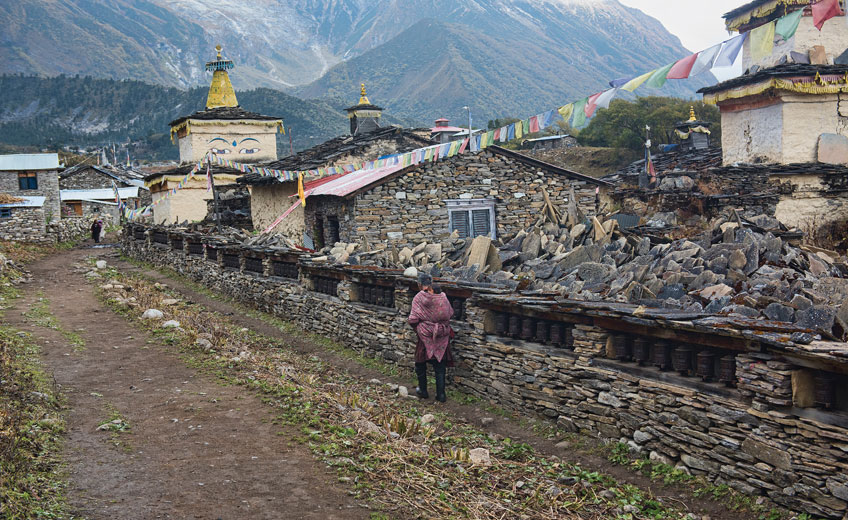
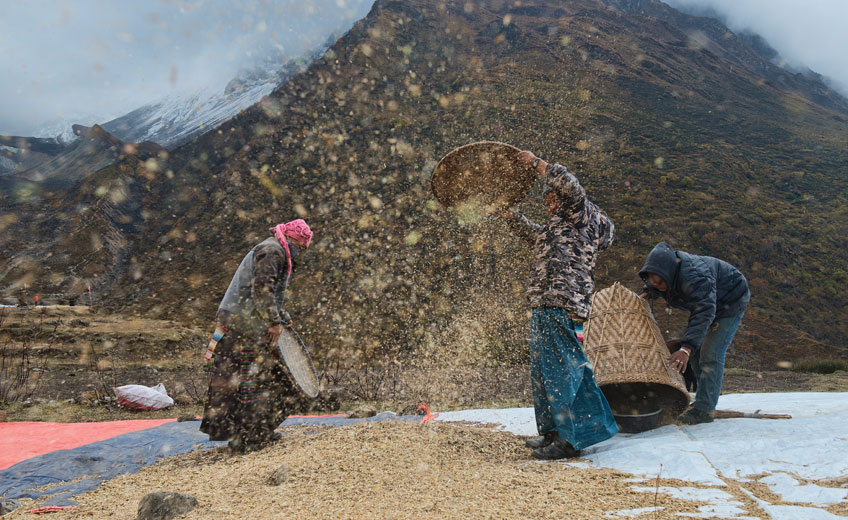
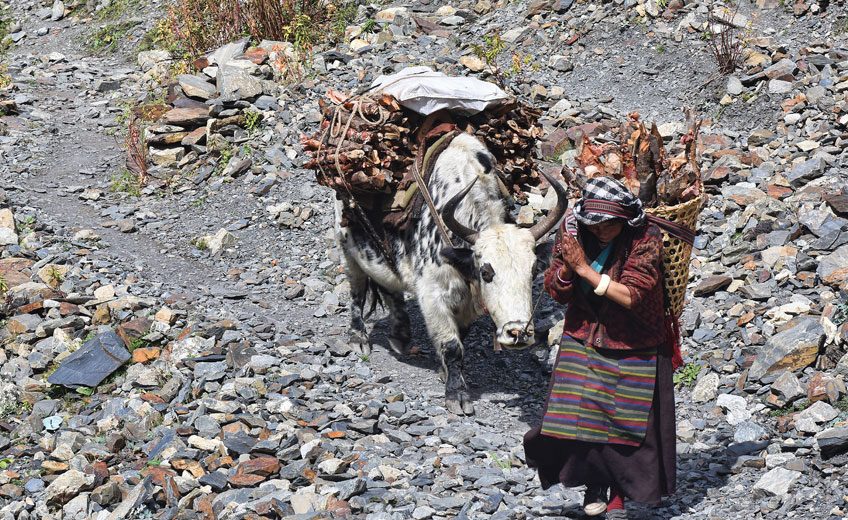
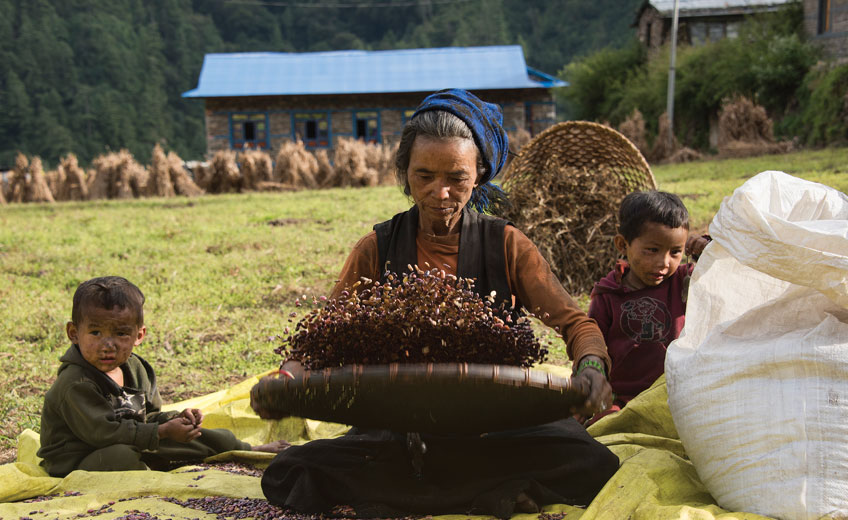
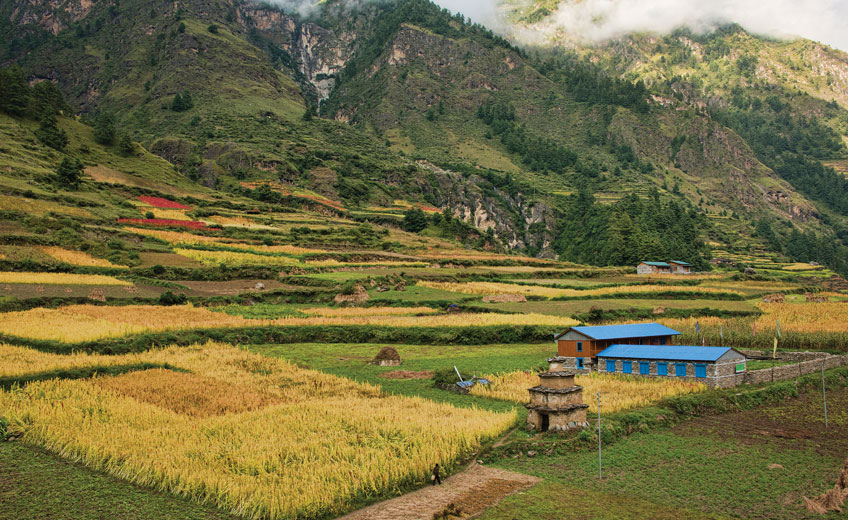
Taking a few rest days, we took advantage of good weather to attempt a side trip to Manaslu Base Camp. Serious climbers use the 4,700-metre camp under the Manaslu Glacier as their staging post for laying siege to Manaslu, which is known as the “Japanese mountain” due to being climbed first by a Japanese team in 1956. Locals believe that the mountain is inhabited by spirits, and that if climbing parties don’t conduct a “puja” ceremony to appease the gods, things will not go well. On several Japanese attempts prior to the first summit success, the gods weren’t appeased and avalanches swept down from the peak and destroyed the Pungyen Gompa monastery in the valley below, and villagers forced subsequent parties to make large donations to rebuild the monastery and promise to honour the local spirits.
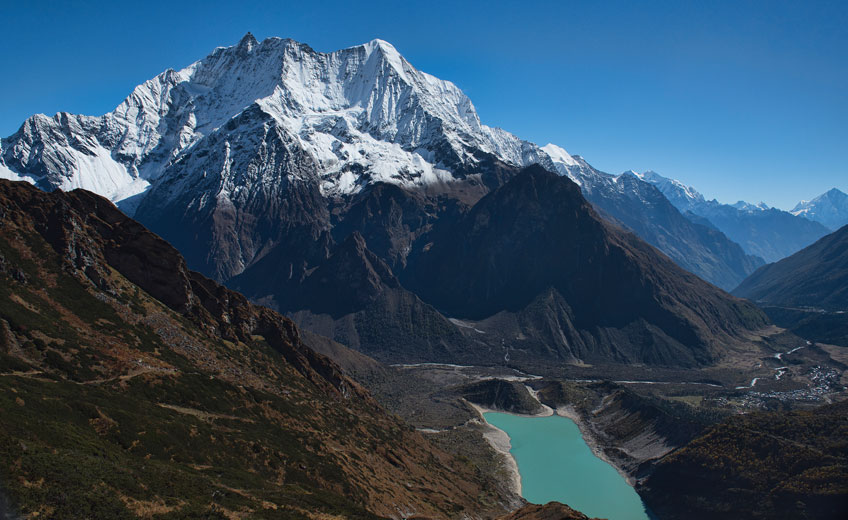
The route up to Manaslu Base Camp follows a narrow moraine ridge, windy and exposed, but climbable by anyone in decent physical shape. Our last several hundred metres were done with short and frozen breaths, but it was all worthwhile – none of the Everest crowds and equally up in the throne room of the mountain gods. It was two days from here to the final staging post before the Larkya La, and I smiled, knowing we were ready to complete one of the world’s most magical mountain journeys.


